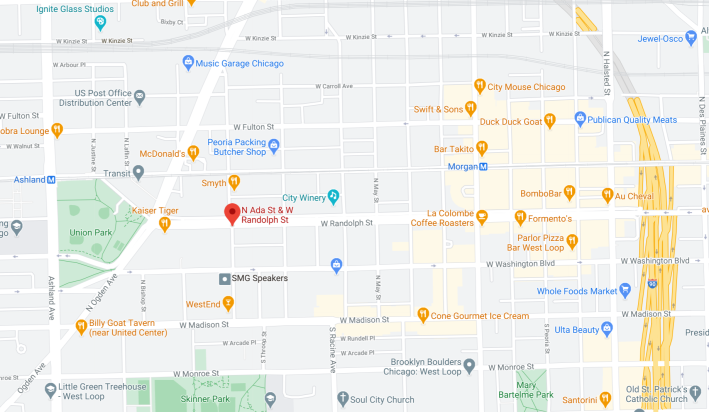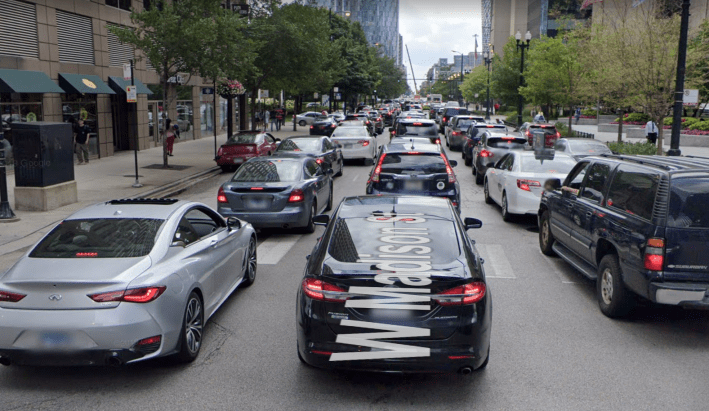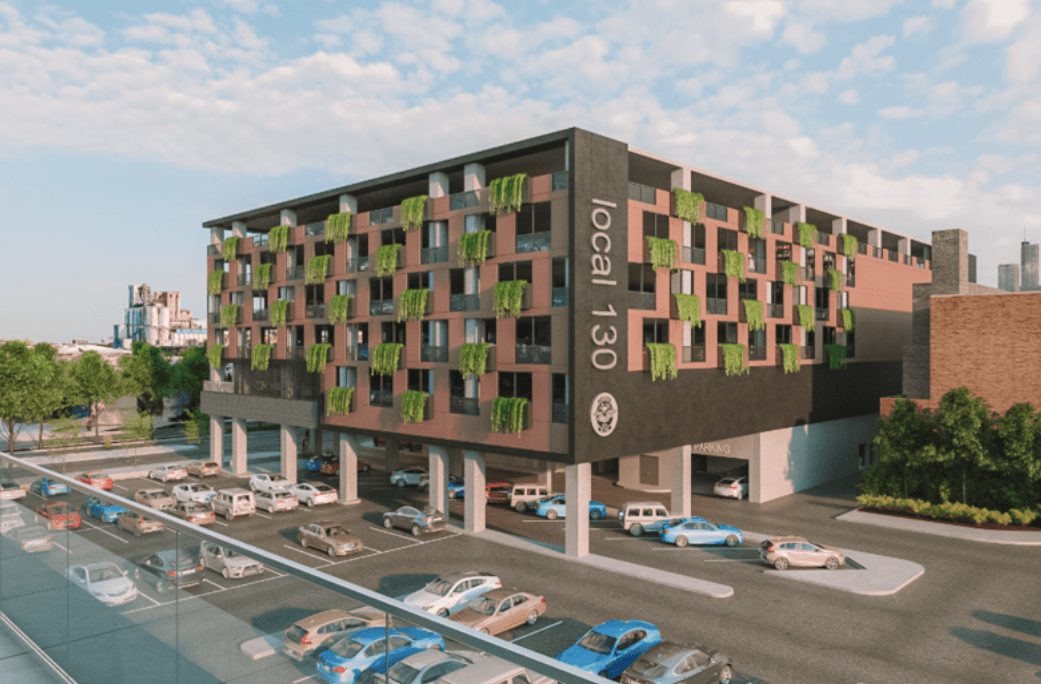I recently learned about a proposal for a 500-car parking garage in the West Loop. As reported by Danny Ecker in Crain's Chicago, the Plumbers Local 130 union has proposed a seven-story, 272,000-square-foot garage with 12,000 square feet of ground-floor retail for land that the union owns at the southwest corner of Randolph and Ada streets, currently occupied by a surface parking lot.
The West Loop has seen an increase in businesses, offices, hotels, restaurants, and residential buildings in recent years. Local residents have long complained about a perceived parking shortage. However, it's not even clear that the proposed garage would see many customers, since it's at the far western end of the Randolph / Fulton commercial corridor, about a 15-minute walk from the focus of the commercial area, near Halsted Street.

But even if the this project was successful from a financial point of view, this focus on car storage ignores the true costs of car-based infrastructure. With all the other challenges currently our city, nation, and world, including the COVID-19 crisis and the urgent need for racial and economic justice, we shouldn't lose sight of the fact that climate change still poses an existential threat. Adding more parking for cars ignores that reality, and will actually induce more car trips, contributing to global warming, as well as traffic congestion and crashes.
A so-called "lack of parking” in a neighborhood is really a sign that two many people are choosing to visit by car. Rather than creating more automobile storage capacity to accommodate this lifestyle choice, the solution is to make traveling to the area on public transportation, foot, or bike safer, more efficient, and more pleasant.
Transit access to the West Loop got better with the reopening of the Morgan Green and Pink station in 2012, which also helped spur more investment in the neighborhood. But there's still plenty of room for improvement.
For example, I stopped taking the CTA's #20 Madison a year and a half ago due to the buses constantly getting stuck in traffic generated by single-occupancy vehicles. I doubt I am alone in being frustrated by slow bus service in the West Loop. Making it more convenient to park cars in the neighborhood will only make the problem worse.

In this age of climate change, the city of Chicago should be asking how we can seriously decrease transportation emissions, the #1 source of greenhouse gases in Chicago and Illinois. Every proposed development should be evaluated according to how much car traffic it will induce. If a project will generate many more car trips, the proposal should be modified to increase sustainable mode share instead.
Efficiently transporting large groups of people in environmentally friendly ways isn't rocket science. Chicago already has excellent transit resources, by U.S. standards at least, in the form of our extensive 'L' and Metra rail systems. There’s no reason why we can’t leverage those assets by making transit faster, more frequent, and more pleasant, except for lack of political will to prioritize sustainable transportation over the non-sustainable variety.
Chicago's horrible parking meter deal, which requires the city to compensate the concessionaire for lost revenue, does present a challenge for improving bus service, it’s not insurmountable. In areas where we can’t convert parking lanes into bus lanes due to the contract, we can at least install signal priority and queue jumps for buses.
For far too long we have accepted that bus service is slow when cities such as Seattle, New York, Minneapolis, and even Los Angeles are lapping us when it comes to bus service improvements. We can do better than this.
Follow Courtney Cobbs on Twitter at @CourtneyCyclez.





